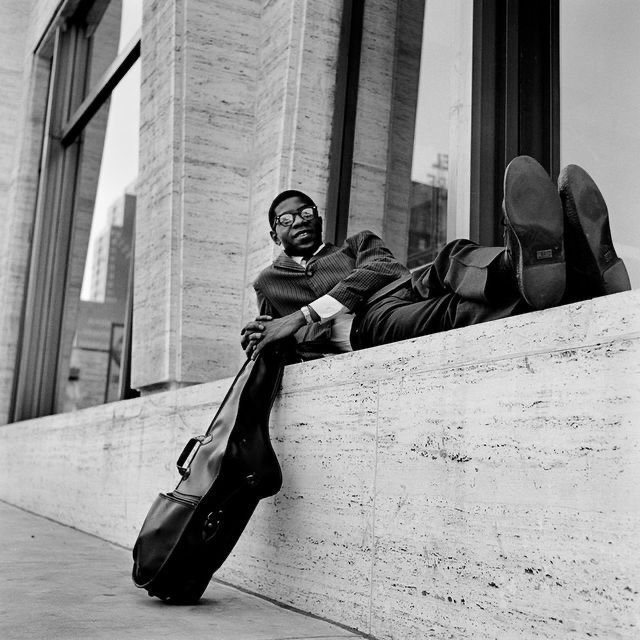Dive into the Power & Passion of ‘Tenor Madness
In the vast panorama of jazz, Sonny Rollins’ “Tenor…
The soul of jazz reverberated through the walls of Van Gelder Studio in Englewood Cliffs, New Jersey, as Joe Henderson and his band of brilliant musicians gathered on June 3, 1963, to craft the masterpiece that would become “Page One.” As the needle drops and those first notes hit the air, I was instantaneously immersed in a world where every sound is an invitation to experience the cosmic language of jazz.

Joe Henderson, the musical astronaut, tenor saxophonist extraordinaire, led the charge in that historic session. Surrounding him was a constellation of shining stars – Kenny Dorham on trumpet, McCoy Tyner on piano, Butch Warren on bass, and Pete La Roca on drums. Each had their unique journey, converging at this singular point to create a force that would propel “Page One” into the jazz stratosphere.
The magnetic pull of “Blue Bossa,” the album’s opening track, and a personal favorite, beckons with its mystic, melancholy charm. Kenny Dorham’s composition is a dance of buoyancy and poignancy, wrapped in the warm embrace of Joe’s tenor sax. McCoy Tyner’s piano weaves a tapestry of harmony, while Butch Warren and Pete La Roca lay down a foundation of rhythm that drives the tune forward. The synergy of these musicians on this track is undeniable.

Two other standout tracks deserving of attention are “La Mesha,” a beautiful ballad penned by Dorham, and “Recorda-Me,” a rhythmic bossa nova delight composed by Henderson himself. Each song showcases the unique talents of the individual musicians while still adhering to the cohesive vision of the album. Dorham’s emotive trumpet lines, Tyner’s exploratory piano, and the rock-solid support of Warren and La Roca meld seamlessly with Henderson’s commanding saxophone presence.
“Page One” captures the essence of classic jazz, propelled by Henderson’s signature sound. Yet, it breaks the mold, infusing the music with a sense of urgency and innovation. The musicians’ individual contributions create a dynamic tension that imbues the album with a palpable energy, driving rhythms that serve as the engine for their powerful solos and ensemble interplay.

Joe Henderson’s legacy as one of the most important jazz musicians ever is cemented by his work on “Page One.” His skillful blending of styles and themes speaks to the essence of jazz as a constantly evolving art form. The album is a testament to the power of collaboration, each musician contributing their unique voice to create a transcendent whole.
The musical style and themes explored in “Page One” resonate with the listener, painting a vivid picture of an era when jazz was a force of nature. Henderson’s compositions and playing on this album showcase his ability to meld the blues, bebop, and Latin influences into a sound that was distinctly his own. The result is an album that remains timeless, as fresh and exciting today as it was upon its release.
Upon its release, “Page One” was met with critical acclaim, heralding Joe Henderson as a rising star in the jazz world. The album’s inventive compositions and virtuosic performances captivated audiences and cemented its place as a landmark recording in jazz history.
Today, the legacy of “Page One” endures as a testament to the power of innovation and collaboration in the world of jazz. The album’s unique blend of styles and influences continues to inspire musicians and listeners alike, serving as a reminder of the limitless possibilities that exist within the genre.
“Page One” has left an indelible mark on modern jazz artists, its influence echoing through the works of contemporary musicians who continue to push the boundaries of the genre. The album serves as a blueprint for creative expression, encouraging artists to explore new avenues of musicality while remaining grounded in the rich traditions of jazz. From the soulful sounds of saxophonists like Joshua Redman and Chris Potter to the innovative compositions of pianists like Robert Glasper and Brad Mehldau, Joe Henderson’s spirit lives on in the music of these modern-day torchbearers.
The influence of Joe Henderson and “Page One” on the contemporary jazz musician extends beyond mere imitation. The album serves as a beacon, illuminating a path for musicians to carve out their own unique sound while staying true to the essence of jazz. Henderson’s ability to blend seemingly disparate styles and influences into a cohesive whole serves as a model for musicians seeking to push the boundaries of their craft.
In conclusion, Joe Henderson’s “Page One” is a testament to the power of innovation, collaboration, and mastery in the world of jazz. From the timeless beauty of “Blue Bossa” to the adventurous spirit that permeates each track, the album remains an essential listen for anyone seeking to understand the true essence of jazz. As we continue to explore the ever-expanding universe of music, let us not forget the pioneers like Joe Henderson who, through their artistry and vision, have shown us what is possible when passion meets skill, and the soul takes flight.